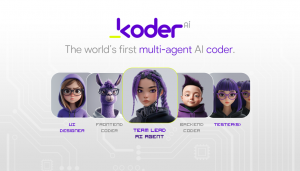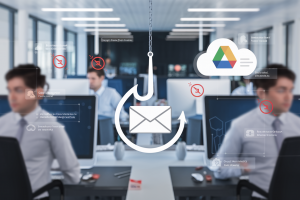Wireless Gestures With WiSee & Ebay’s Smart Walls – SiliconANGLE News Roundup
![]() Computer scientists at the University of Washington have developed a new gesture recognition technology that could forever change how we interact with our WiFi networks.
Computer scientists at the University of Washington have developed a new gesture recognition technology that could forever change how we interact with our WiFi networks.
Using an adapted router and a few wireless devices, the new system called WiSee leverages WiFi signals to detect human movement without the need of any remote. By observing the slight changes in frequency that come from smartphones, tablets, and laptops, the receiver can detect a pattern of changes known as the doppler frequency shift, which can be interpreted by the system as a moving arm or leg.
In total, the technology can identify nine different whole-body gestures, and the researchers plan to use the WiSee to control multiple household devices at once.
Amazon’s Plans to Produce Your Produce
Amazon’s new plans may have some grocery stores shaking in their boots. The online retailer has been testing AmazonFresh, a grocery delivery business, in its hometown of Seattle for the last five years.
Amazon’s grocery business is capable of delivering fresh produce such as eggs, strawberries and meat with its own fleet of trucks.
Now for the first time, Amazon will expand its grocery business to other markets starting with Los Angeles as early as this week and the San Francisco Bay Area later this year. The company also has plans to launch AmazonFresh in 20 other cities in 2014, including a few locations outside of the US if things go well. The US grocery business generated $568 billion dollars in retail sales last year. If AmazonFresh proves successful, they could potentially spell a threat not only to grocery chains and mass retailers like Walmart, but an Amazon truck delivery service could also have implications for UPS, FedEx and other package delivery companies that currently ship Amazon goods.
Hoping Lightning Will Strike Twice
![]() Intel’s next Thunderbolt technology, known previously by the name Falcon Ridge, has a new, official name: the Thunderbolt 2. The newest version of Intel’s controller chip is expected to double the speed of the first-generation port, supporting up to 20Gbps of bi-directional bandwidth.
Intel’s next Thunderbolt technology, known previously by the name Falcon Ridge, has a new, official name: the Thunderbolt 2. The newest version of Intel’s controller chip is expected to double the speed of the first-generation port, supporting up to 20Gbps of bi-directional bandwidth.
The new chip will come with more than enough power to support both transferring and playing a 4k video at the same time. The current version of Thunderbolt struggles to complete even one of those tasks. The Thunderbolt 2 comes with full backward compatibility so the same cables and connectors can be used.
Sony’s New Viao – Small But Powerful
Sony just unveiled two new additions to their Vaio laptop line based on Intel’s new Haswell microprocessor.
The first laptop, the Vaio Pro, is a touch-enabled ultrabook that comes in an eleven and thirteen inch version. Starting at over eleven hundred dollars, the Pro isn’t the most affordable laptop on the market, but it includes several non-standard features, such as near field communications.
The second laptop, the Viao Duo, is a slider hybrid PC that can be used as a tablet or a laptop. The fourteen hundred dollar device will come with a pen and more precise touchscreen than the Pro. It’s made of carbon fiber to reduce its weight to a slim two-point-eight-seven pounds.
Both devices will come with Windows 8 and will feature an HD Tri-luminous display that, according to Sony, makes colors purer and more distinct. The new Viaos will be available this Sunday.
Image Issues For Google Glass
![]() A new version of the Google Glass software is available, and it would appear that the latest updates to the device are focusing entirely on images.
A new version of the Google Glass software is available, and it would appear that the latest updates to the device are focusing entirely on images.
For instance, Glass now has the ability to shoot HDR images. The resulting images have a better balance between light and dark areas (as you can see in the photo). In addition, a new option now lets users add a voice caption to their photos as they share them. With just a tap, if you snap and photo and speak, a caption of your words will appear along with your photo on Google+. So far, this function does not appear to work with Twitter, but we can expect to see more use of this functionality as Glass continues to develop.
A Touching Change for Microsoft
Microsoft has been busy detailing additional Windows 8.1 improvements this week at its annual Tech-Ed conference. One particular feature, native fingerprint reader support, is designed to improve Windows’ notoriously mixed support for biometric devices.
Previous versions of Windows have not directly supported fingerprint readers, leaving Microsoft to rely on third-party drivers and software for the device to work. Improvements like native support for biometrics on Windows 8.1 will allow for options like the ability to lock down individual folders to fingers, or the ability to purchase applications using a fingerprint reader. Users could even use their fingerprints to login to apps, bypassing the need to remember logins and passwords.
Reports indicate that they’re working with various OEMs to add fingerprint readers to laptops, tablets, keyboards, and even mice, indicating that Microsoft wants this technology to play an important role in the Windows experience of the future.
Facebook Answering to Shareholders
![]() A little over a year after their initial public offering, Facebook’s board of directors and stockholders are set to convene on June 11th.
A little over a year after their initial public offering, Facebook’s board of directors and stockholders are set to convene on June 11th.
The social network plans to webcast their first shareholder’s meeting, so anyone who’s interested will be able to sit-in on the discussion.
Shareholders will have an opportunity to elect the board of directors, with Facebook politely asking to elect all existing board members except for Jim Breyer, who announced in April that he would step down after eight years of service. The members seeking re-election include such names as Mark Zuckerberg, Marc Andreessen, and Peter Thiel. The Webcast will allow us to see if stockholders voice any frustrations or take their disappointment out on CEO Mark Zuckerberg, or the board.
The meeting will signify the end of Facebook’s first year as a public company, where we saw its shares slide from a $38 opening to today’s value of less than $24.
Google Strengthens Ads With Web Designer
Google is set to launch yet another new product, Google Web Designer.
Web Designer is reported to be an HTML5 development tool for “creative professionals” that won’t be a typical website building service, but rather, will focus on going after the native ads market, like brand experiences and sponsored stories.
Though they’ve been rather tight-lipped about the product, Google says the service will launch within the coming months, and according to a spokesperson, Web Designer is meant to “empower creative professionals to create cutting-edge advertising as well as engaging web content like sites and applications – for free.”
With other companies like Squarespace and Weebly providing a similar service, Google will have its fair share of competition in the ad design world. Expect to see Google step-up to the challenge when we learn more about the service in the coming months.
PayWalls Don’t Mean What They Used To
![]() Ebay has introduced a new eCommerce technology that will allow consumers to get all their shopping done while standing in front of smart walls. The new Shoppable Windows are designed to help retailers generate more sales from their existing physical stores.
Ebay has introduced a new eCommerce technology that will allow consumers to get all their shopping done while standing in front of smart walls. The new Shoppable Windows are designed to help retailers generate more sales from their existing physical stores.
Shoppable Walls will be open for business from June eighth to July seventh in busy parts of New York City. They measure about nine feet across and two feet high, and will appear on the front windows of closed stores. Shoppers can use the touch screens to view and order products, which will be delivered within the hour by a courier.
Customers won’t have to enter any sensitive billing information at the display, as the courier will accept payments through PayPal Here at the time of delivery. Steve Yankovich, eBay’s head of Innovation and New Ventures group spoke about the technology, saying, “This extends the boundary of the store. Suddenly the physical store, by virtue of online technology, extends to any space that’s interesting to use.”
For this and more tech news, be sure to join us weekdays on NewsDesk with Kristin Feledy.
photo credit: Viktor Hertz via photopin cc
photo credit: the JoshMeister via photopin cc
photo credit: Fil.ippo via photopin cc
photo credit: Robert Scoble via photopin cc
photo credit: Panoramas via photopin cc
writing credit: Andrew E. Lowe
A message from John Furrier, co-founder of SiliconANGLE:
Your vote of support is important to us and it helps us keep the content FREE.
One click below supports our mission to provide free, deep, and relevant content.
Join our community on YouTube
Join the community that includes more than 15,000 #CubeAlumni experts, including Amazon.com CEO Andy Jassy, Dell Technologies founder and CEO Michael Dell, Intel CEO Pat Gelsinger, and many more luminaries and experts.
THANK YOU













